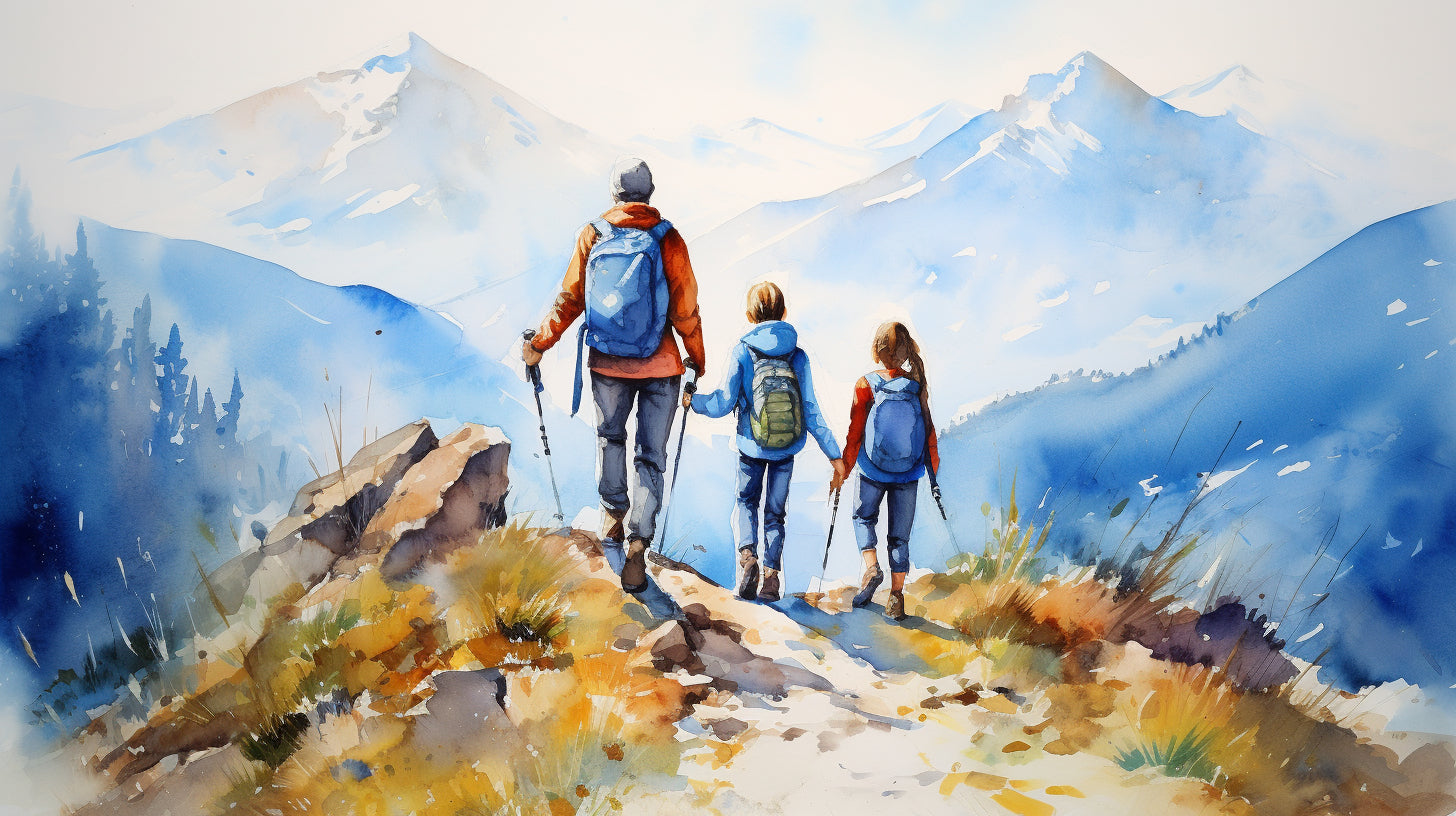Embarking on outdoor adventures with family can be the perfect recipe for fun, bonding, and memorable experiences. However, without the necessary safety measures, what starts as a delightful escapade can quickly turn into an unwanted ordeal. The wild oyster that is Mother Nature, although invigorating and beautiful, comes with its share of hazards. This article takes a closer look at the essentials of outdoor safety. From alarming statistics to hands-on prevention measures and the overall impact of safety on health and well-being, we'll arm you with knowledge to ensure your next family getaway is spent basking in nature's glory, free from worry. So, before you pack those hiking boots or load that tent, let's dive into the fascinating world of outdoor safety, ensuring you and your family can enjoy that blissful nature romp with peace of mind.
Injury Statistics and Key Data Related to Outdoor Safety
There's an enthralling charm about the great outdoors, the pristine landscapes and breathtaking vistas that you can never get enough of. However, as much as we all love a bit of adventure, it’s also essential to keep in mind the statistics related to outdoor safety. Understanding the data can make us better prepared and, most importantly, safer.
Participation in Outdoor Recreation
In 2021, a notably high percentage of people across the United States - to be precise, 54% of Americans ages 6 and over - felt the call of the wild taking part in outdoor recreational activities at least once. It's a remarkable testament to the allure of the outdoors and the increasing interest many find in the revitalizing experience nature provides.
Injury Rates and Types
With increased participation, however, comes increased risk. One startling statistic is that injuries from diving or diving boards showed a substantial uptick between 2021 and 2022. This particular activity saw an increase in injuries by a staggering 72%. Similarly, sports and recreational injuries increased by 12% in 2022, reflecting an upward trend in the likelihood of getting hurt while enjoying the great outdoors.
Outdoor Fatality Rates
While injuries are noteworthy, we also need to shift our focus towards invisible yet deadliest risks - the fatality rates. Reviewing data from 390 U.S. National Parks, a chilling discovery was made. Among the 542 million visitors, 46 injury-related fatalities were identified. Further, the National Park Service reports an average of 160 visitor deaths annually. These sobering figures underscore the need for caution when taking part in outdoor activities.
Outdoor Playtime for Children
On the wholesome side of adventure, it's a bit disheartening to realize that the average amount of unstructured outdoor playtime for most children is only four to seven minutes per day. Increasing this time can lead not only to improved physical health but also foster creativity in young minds. But, as benefits increase, so does the potential for accidents.
Injuries in National Parks
Outdoor spaces like National Parks are often hotspots for outdoor activities. But, along with the influx of visitors, they also receive a substantial number of injury cases, approximately 500,000 annually reported to emergency departments. These numbers command our vigilance while exploring the wilderness to prevent unnecessary accidents and injuries.
Age-group Specific Injuries
The data shows that the 15- to 19-year age group has the highest injury rate. Conversely, the age group 45 years and older tend to have the lowest injury rate. This statistic calls for age-specific safety measures to be put in place, ensuring that all adventurers, regardless of their age, can safely navigate their outdoor escapades.
In the end, the great outdoors is a wonder to be cherished. Let's keep it both adventurous and safe for everyone by making informed decisions and respecting the bounds set by Mother Nature herself.
Outdoor Safety Measures: What to Do and What Not to Do
When adventure calls and spirits are high, it's all too easy to forget about simple outdoor safety precautions. As the great outdoors provide ample room for adventure, they also usher in potential hazards that can turn a fun-filled day into a lethal one. From overbearing heat to hiker's perilous lightning encounters, safety in the open expanses is crucial. This guide delves into key safety measures that you can adopt for an enjoyable, secure outdoor escape.
Heat Tolerance
As the sun basks in all its glory, the heat levels outdoors elevate significantly. Herein lay the risk of heatstroke and dehydration, the nemeses of outdoor endeavors. Outdoor fatalities are most likely to occur in the first few days of working or playing in warm or hot environments. To arm up against these potential dangers:
- Hydrate frequently: Let water be your best friend.
- Rest intermittently: Take regular breaks in shaded or cool areas.
- Dress appropriately: Light, breathable, and light-coloured clothing is ideal.
- Avoid extended sun exposure: Plan activities to avoid peak sun hours, typically between 10 a.m. and 4 p.m.
Safety in Water Activities
Water activities are an integral part of outdoor delight. But do remember that any water body, whether it’s a pool, lake, or sea, poses potential perils. Here's what you can do to ensure safety:
- Always supervise children in or around water.
- There's safety in numbers: Avoid swimming or boating alone.
- Wear life jackets in deep waters, especially if you're a weak or inexperienced swimmer.
Lightning Precautions for Hikers
For the trailblazers venturing out on hikes, lightning poses a fickle, yet fatal threat. Never take your chances with lightning. When thunder roars, it's time to get indoors. If you're caught outside during a storm:
- Avoid high places and open fields.
- Don't congregate together. Avoid large groups to minimize exposure.
- When indoors, keep away from windows and avoid electrical appliances.
Preventing Falls
Falls are not only the bane of existence for senior citizens but also the leading cause of non-fatal injury for children, especially in playgrounds. Prevent falls by:
- Assuring sturdy and safe outdoor equipment.
- Encouraging children to use the equipment appropriately.
- Wearing appropriate footwear for outdoor activities.
Preventing Playground Accidents
While playgrounds are a haven for children, they are not without risks. To ensure a safe and enjoyable playground time:
- Supervise children to avoid reckless behavior.
- Check equipment and surfaces for extreme heat to prevent burns.
- Ensure the use of safety-tested and age-appropriate equipment.
Safety for Outdoor Workers
For the plucky outdoor workers, the risk comes in the form of heat-related illnesses. In fact, there were five heat-related deaths reported in Texas alone in 2018. To protect oneself from these risks:
- Drink plenty of water: At least 1 cup every 15-20 minutes.
- Take regular breaks in shaded or cool locations to battle heat exhaustion.
- Use sunscreen with high SPF and wear a wide-brimmed hat.
Safety outdoors is paramount. By practicing these preventive measures, each adventurist, waterbaby, hiker, child, or outdoor worker can turn their outdoor endeavors into a cherished memory rather than a doomed hazard. Remember, safety first!
Safety Tips for Preventing Outdoor Fires
When you think of enjoying a camping trip or spending a peaceful evening in your backyard, the image of a warm, cozy fire most likely comes to mind. However, outdoor fires, when not handled correctly, can pose significant risks. They stand as a significant contributor to structure fires, often leading to unfortunate events like injuries, death, and property damage. So, how do you ensure that an attempt to create a heart-warming experience doesn't end in a heart-wrenching catastrophe? Let's delve into some extremely important safety measures you can keep in mind.
Always Watch the Fire
A golden rule to follow when dealing with fires: Never leave them unattended. Fires can rapidly spread with the slightest of wind shifts. Always ensure that someone is watching over it.
Use a Fire Pit or Chiminea
Consider using an outdoor fire pit or a chiminea. These items help control your fire and prevent the flames from spreading. Also, make sure you set them up on non-flammable surfaces such as concrete, dirt, or gravel.
Keep Water Close By
Always have a large amount of water nearby. In case of an emergency, this will indeed come in handy to completely extinguish the fire. Remember, each flame should be put out cautiously when you're through with the fire.
Exercise Caution with Flammable Fluids
Avoid using gasoline or other flammable fluids to start or reignite your fire. These substances could cause the fire to become uncontrollable and increase the chance of injury.
Implement a Safety Zone
Establish a three-feet "pet and child-free zone" around the fire area. This prevents accidental falls into the fire pit and ensures the security of your loved ones.
"Fire is never a gentle master." - Proverb
The above saying holds true, especially for outdoor fires. Implementing these safety measures can save lives and prevent a considerable amount of property damage. Maintain caution and let's keep the outdoor warmth safe and enjoyable!
Importance of Outdoor Safety: Reinforcing Health and Well-being
Outdoor activities, be it a relaxing game in the park, or an adventurous hike in the wilderness, are not just about fun; they carry immense importance in bolstering health and promoting overall well-being. Time outside leads to significantly more robust physical health due to the increased physical movement. Still, its benefits extend to various dimensions of mental health, including reducing stress, increasing happiness, and promoting a more peaceful mindset. However, for these benefits to be genuinely savored, observing outdoor safety is paramount.
Adopting safety measures during outdoor activities can significantly prevent injuries and accidents. Let's shed some light on some practical safety protocols that can reinforce your outdoor activities' health and well-being benefits:
- Use appropriate gear: Gear up with the right equipment for every outdoor activity. For hikers, don't forget your boots, helmet, and hiking stick. Cyclists should always wear a helmet, while swimmers must don life jackets if they aren't strong swimmers. Taking this simple precaution can prevent a majority of outdoor accidents.
- Stay Hydrated: Water should be your best companion when stepping outside. When you're in the heat and exercising vigorously, you're likely to get dehydrated faster. This can lead to fatigue or worse — heat stroke.
- Plan and Practice: Proper planning before going outdoors is a lifesaver. Learn basic survival skills, be aware of your surroundings and inform someone about your whereabouts.
- Use Sun protection: Sunscreen is a must when you step outside. It protects your skin from harmful UV rays, reducing your risk of skin cancer, and premature aging.
- First Aid Knowledge: Having basic first aid knowledge –for instance, how to clean a wound, or craft a makeshift splint can ensure small injuries don’t escalate into serious health problems
Remember, "Safety doesn't happen by accident." Ensuring outdoor safety is crucial to reinforcing our health and well-being. If we take simple precautions, we can keep ourselves safe while also reaping the health benefits that the great outdoors brings. With mindful planning, preparation, and a commitment to stay safe, outdoor adventures can be both exhilarating and significantly beneficial to our overall health.
Conclusion
Ensuring optimal outdoor safety is not just an individual or family's responsibility. It's a collective endeavor that encompasses a larger community and necessitates ongoing education, precaution, and mindful product selection. Be it a thrilling adventure or a relaxing family escape, ultimately, it's about experiencing the joy and novelty of the outdoors while also maintaining safety as a priority.
Every great adventure, whether it's a hike in the mountains or a day at the beach, demands adequate preparation. At Empowered by Ashley, we strive to instill this sense of preparation in our customers. Our diverse product line-up, spanning from personal safety alarms to unique drink cover scrunchies, is created with your protection, confidence, and peace of mind at the forefront.
But remember, products alone can't guarantee safety. They need to be complemented with conscious decision-making, common sense, and a keen awareness of one's surroundings. So, here's to safer, brighter, more exciting outdoor experiences for everyone. Let's continue our journey with safety, health, and well-being in our backpacks!
Frequently Asked Questions
-
What are some essential outdoor safety tips for families?
Some essential outdoor safety tips for families include: 1. Stay hydrated, 2. Dress appropriately, 3. Use sunscreen, 4. Stay on marked trails, 5. Carry a first aid kit.
-
Why is staying hydrated important when enjoying outdoor activities?
Staying hydrated is important when enjoying outdoor activities because it helps regulate body temperature, prevents dehydration, and helps maintain overall health and well-being.
-
How should families dress appropriately for outdoor activities?
Families should dress appropriately for outdoor activities by wearing comfortable and weather-appropriate clothing, including sturdy shoes, breathable layers, hats, and sunglasses. They should also consider the specific activity and location when choosing their attire.
-
Why is using sunscreen important during outdoor activities?
Using sunscreen during outdoor activities is important as it helps protect the skin from harmful UV rays, reduces the risk of sunburn, and lowers the risk of skin cancer.
-
Why is it important to stay on marked trails while exploring nature?
Staying on marked trails while exploring nature is important for safety reasons. It helps prevent getting lost, reduces the risk of encountering dangerous wildlife or hazardous conditions, and minimizes damage to the ecosystem.



















Leave a comment
This site is protected by hCaptcha and the hCaptcha Privacy Policy and Terms of Service apply.